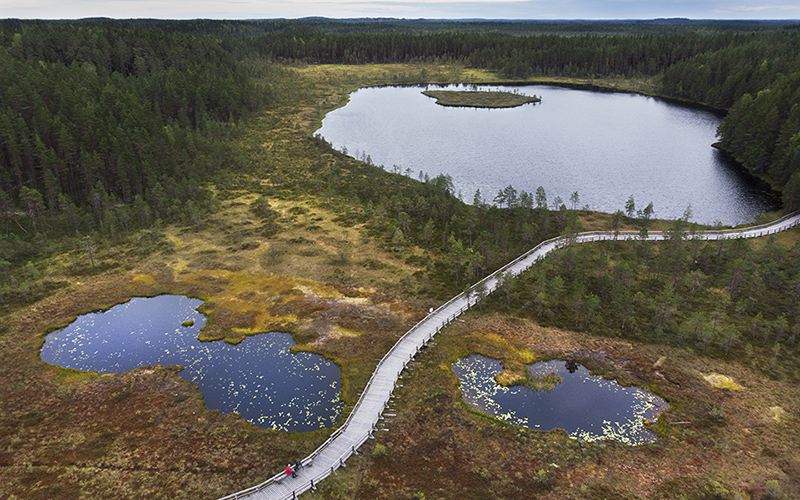According to a recent report by an international Evaluation Team, the management of protected areas in Finland is of a high standard and the system of protected areas managed by Metsähallitus Parks & Wildlife Finland works well. However, significant challenges lie ahead. Many species are endangered, threats due to climate change are increasing and resources available for management are declining.
The report of the international Evaluation Team is based on a methodology developed by the International Union for Conservation of Nature (IUCN). Finland was the first country in the world to carry out an international management effectiveness evaluation of the national protected area system in 2004.
The protected area network managed by Parks & Wildlife Finland plays a particularly important role in halting the decline of Finland’s biodiversity. The Evaluation Team gave several recommendations on how Parks & Wildlife Finland could respond to future challenges, rethink its role as an organisation and develop the management of protected areas.
– The international assessment is an important step towards safeguarding biodiversity and more effective conservation work. This assessment provides guidelines for increasing the impact of the work and helps to compare our competence internationally. Next, we will analyse the recommendations and draw up a development plan from them. We will prioritise the recommendations that we can implement promptly, says Henrik Jansson, Executive Director of Parks & Wildlife Finland.
The need to assess and improve the effectiveness of protected area management is recognised in the International Convention on Biological Diversity. It aims to ensure that, by 2030, at least 30% of land and water areas, in particular areas important for biodiversity and ecosystem functions, are effectively protected and managed. Achieving this target is central to the European Union and national biodiversity strategies.
– Achieving the goals of nature conservation requires good international cooperation. Assessing the effectiveness of protected areas will be an important theme at the meeting of The World Protected Areas Leaders Forum held in Finland in July. The work done in Finland has already aroused widespread interest.

Future goals
The Evaluation Team made recommendations to improve management effectiveness, focusing in particular on future vision, policies, site management, international cooperation, stakeholder involvement and knowledge management.
Examples of key recommendations:
- Develop plans for growing challenges such as climate change adaptation and impacts of invasive alien species.
- Explore opportunities to broaden the funding base and increase volunteering.
- Strengthen the use of research in the management of protected areas.
- Increase opportunities for consultation, participation and ownership of local communities.
- Develop cooperation in tourism and responsible recreational use of protected areas and cultural heritage sites, sustainability management.
- Improve the connection between the activities of Parks & Wildlife Finland and international obligations related to biodiversity.
Assessment methodology and report
The protected area management effectiveness evaluation was based on the framework and methodology developed by the IUCN World Commission on Protected Areas (WCPA). The assessment focused on the operating environment and the status of protected areas, planning, input/resources, processes, output and outcomes. The current management of the protected area network was evaluated and compared with the results of the previous evaluation carried out in 2004.
In addition to a network level questionnaire, a site level assessment based on the Management Effectiveness Tracking Tool (METT) was carried out in five protected areas. The evaluation also included a field study with visits to the protected areas assessed and meetings with representatives of Metsähallitus, stakeholders and organisations. The Evaluation Team included experts from the United Kingdom, the Czech Republic, the United States and Finland.
Management Effectiveness Evaluation of Finland’s Protected Areas 2023 (julkaisut.metsa.fi; documentation pages also in Finnish, Swedish and Sámi)
Management Effectiveness Evaluation of Finland’s Protected Areas 2023 – Summary of the Evaluation Report and Recommendations (julkaisut.metsa.fi)
More information
Henrik Jansson, Executive Director of Parks & Wildlife Finland, tel.int. +358 400 328759, henrik.jansson@metsa.fi
Matti Tapaninen, Senior Specialist, Tourism, Parks & Wildlife Finland, tel.int. +358 40 727 0453, matti.tapaninen@metsa.fi
Sue Stolton, Evaluation Team Leader (UK), Equilibrium Research, tel.int. +44 (0)793 306 7445, sue@equilibriumresearch.com